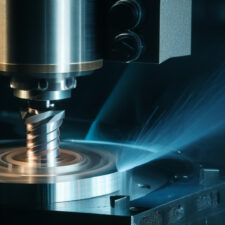If you are a beginner to the world of machining, there is no doubt that you will have many questions. Especially when it comes to the advanced world of five axis machining. In this article, we will explore some of the most common questions that beginners have about five axis machining.
What is Five Axis Machining?
Five axis machining is a manufacturing process that involves the use of a CNC machine to create complex shapes and parts. This process uses a cutting tool that can move in five different directions, allowing for more intricate shapes and designs to be created.
What are the Advantages of Five Axis Machining?
There are several advantages of five axis machining, including:
- Increased Efficiency: Five axis machining allows for more complex shapes to be created in a shorter amount of time, increasing efficiency.
- Improved Accuracy: With the ability to move the cutting tool in five different directions, the accuracy of the machining process is improved.
- Reduced Setup Time: With the use of five axis machining, the setup time is reduced, as multiple operations can be performed in one setup.
What Materials Can be Used for Five Axis Machining?
Five axis machining can be used with a wide range of materials, including:
- Metals: such as aluminum, steel, and titanium.
- Plastics: such as polycarbonate, ABS, and acrylic.
- Composites: such as carbon fiber and fiberglass.
What are the Applications of Five Axis Machining?
Five axis machining is commonly used in industries such as:
- Aerospace: for the production of aircraft parts and components.
- Automotive: for the production of engine components, suspension components, and more.
- Medical: for the production of medical devices and implants.
What is the Cost of Five Axis Machining?
The cost of five axis machining can vary depending on several factors, including:
- Complexity of the Part: The more complex the part, the higher the cost.
- Material: The cost of the material being used can affect the overall cost of the machining process.
- Volume: The volume of parts being produced can affect the cost, with larger volumes generally resulting in a lower cost per part.
In conclusion, five axis machining is an advanced manufacturing process that offers many advantages over traditional machining methods. With the ability to create complex shapes and designs in a shorter amount of time, and with improved accuracy, five axis machining is a valuable tool for many industries. As a beginner, it is important to understand the basics of five axis machining and how it can be used to create high-quality parts and components.

